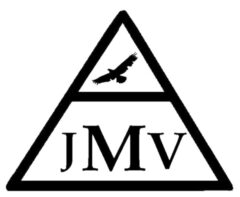Víctor Perez, Jamille Pasco
Cite
Perez V, Pasco J. Identifying asynchronies: Early cycling. J Mech Vent 2023; 4(1):57-59.
Abstract
Mechanical ventilation is a lifesaving treatment but can be associated with some complications such as ventilator-induced lung injury, ventilator associated pneumonia or ventilation induced diaphragm dysfunction.
Although partial ventilatory support is preferred to limit some of the complications associated with controlled mechanical ventilation, there could be some problems like asynchrony between the patient and the ventilator.
Asynchronies occur when the ventilator’s breath delivery does not match the patient’s ventilatory pattern or is inadequate to meet their flow demand.
Asynchronies can lead to patient’s discomfort, prolong mechanical ventilation, intensive care unit stay and mortality.
Early cycling occurs when the patient’s neural inspiratory time is longer than the inspiratory time imposed by the ventilator. It is a common cause of double trigger.
Keywords
Patient-Ventilator asynchrony, early cycling, double trigger
References
| 1. de Wit M, Miller KB, Green Daet al. Ineffective triggering predicts increased duration of mechanical ventilation. Crit Care Med 2009; 37(10):2740-2745. https://doi.org/10.1097/00003246-200910000-00010 PMid:19886000 |
| 2. Thille AW, Rodriguez P, Cabello Bet al. Patient-ventilator asynchrony during assisted mechanical ventilation. Intensive Care Med 2006; 32:1515-1522. https://doi.org/10.1007/s00134-006-0301-8 PMid:16896854 |
| 3. Vitrag HS, Samanta A, Ray S. Patient-Ventilator Asynchrony: Etiology and Solutions. Indian Journal of Clinical Practice 2021; 31(8):714-724. |
| 4. de Haro C, Ochagavia A, López-Aguilar J, et al. Patient-ventilator asynchronies during mechanical ventilation: current knowledge and research priorities. Intensive Care Med Exp 2019; 7(Suppl 1)(43):1-14. https://doi.org/10.1186/s40635-019-0234-5 PMid:31346799 PMCid:PMC6658621 |
| 5. Blanch L, Villagra A, Sales B, al. e. Asynchronies during mechanical ventilation are associated with mortality. Intensive Care Med 2015; 41:633-641. https://doi.org/10.1007/s00134-015-3692-6 PMid:25693449 |
| 6. Kondili E, Prinianakis G, Georgopoulos D. Patient-ventilator interaction. Br J Anaesth. 2003; 91(1):106-119. https://doi.org/10.1093/bja/aeg129 PMid:12821570 |
| 7. Tobin M, Jubran A, Laghi F. Patient-ventilator interaction. Am J Respir Crit Care Med. 2001; 163:1059-1063. https://doi.org/10.1164/ajrccm.163.5.2005125 PMid:11316635 |
| 8. Perez V, Pasco J. Identifying asynchronies: work shifting and double triggering. J Mech Vent 2022; 3(4):190-194. https://doi.org/10.53097/JMV.10066 |
| 9. Mireles-Cabodevila E, Siuba M, Chatburn R. A taxonomy for patient-ventilator interactions and a method to read ventilator waveforms. Respir Care 2022; 67(1):129-148. https://doi.org/10.4187/respcare.09316 PMid:34470804 |
| 10. Damiani L, Bruhn A, Retamal J, et al. Patient-ventilator dyssynchronies: Are they all the same? A clinical classification to guide actions. J Crit Care 2020; 60:50-57. https://doi.org/10.1016/j.jcrc.2020.07.016 PMid:32739760 |
